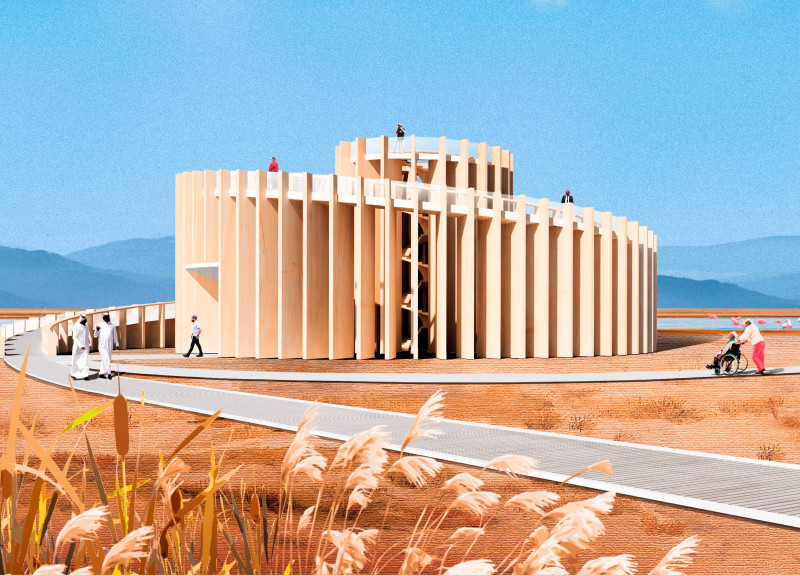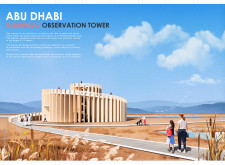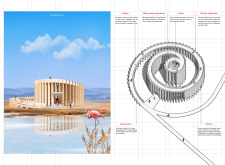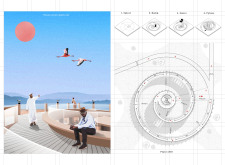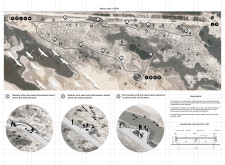5 key facts about this project
What sets this project apart from others is its focus on sustainable design principles and a user-centric approach. The architecture incorporates a variety of materials that blend with the natural landscape while enhancing the visitor experience. Key elements include a gently inclined ramp, an open-air observation platform, and informative modules placed along the pathways to educate visitors about the local ecosystem.
Spiral Ramp and Observation Deck
The primary architectural feature of the Flamingo Observation Tower is the spiral ramp, designed with a 6-degree incline to facilitate ease of movement. This design choice reflects a commitment to inclusivity, allowing all users, including those with disabilities, to experience wildlife observation without barriers. The observation deck at the top provides an unobstructed view of the wetlands, utilizing durable materials that ensure safety while harmonizing with the surroundings. The glass fence around the deck offers visibility without compromising visitor safety.
Sustainable Materials and Integration with Landscape
The construction of the tower employs sustainable materials, such as Laminated Veneer Lumber (LVL) for structural support, known for its strength and eco-friendliness. The use of composite decking for pathways demonstrates a thoughtful approach to material choice, contributing to the project’s low environmental impact. Furthermore, the tower’s design integrates seamlessly into the landscape, with boardwalk systems minimizing ecological disruption while enhancing the visitor experience. Information modules along the pathways provide insights into the local flora and fauna, underscoring the educational aspect of the structure.
Visitor Engagement and Educational Focus
The Flamingo Observation Tower is engineered not just for observation but also for engagement. The inclusion of telescopes on the observation deck encourages deeper interaction with the wildlife, while the strategically placed educational modules enhance awareness of conservation efforts. This thoughtful integration of design and function exemplifies how architecture can foster appreciation for nature while promoting sustainable tourism practices.
For further insights into the architectural design and functionality of the Flamingo Observation Tower, we invite you to explore detailed architectural plans, sections, and designs that illustrate the project’s unique approach to wildlife observation and visitor accessibility.


